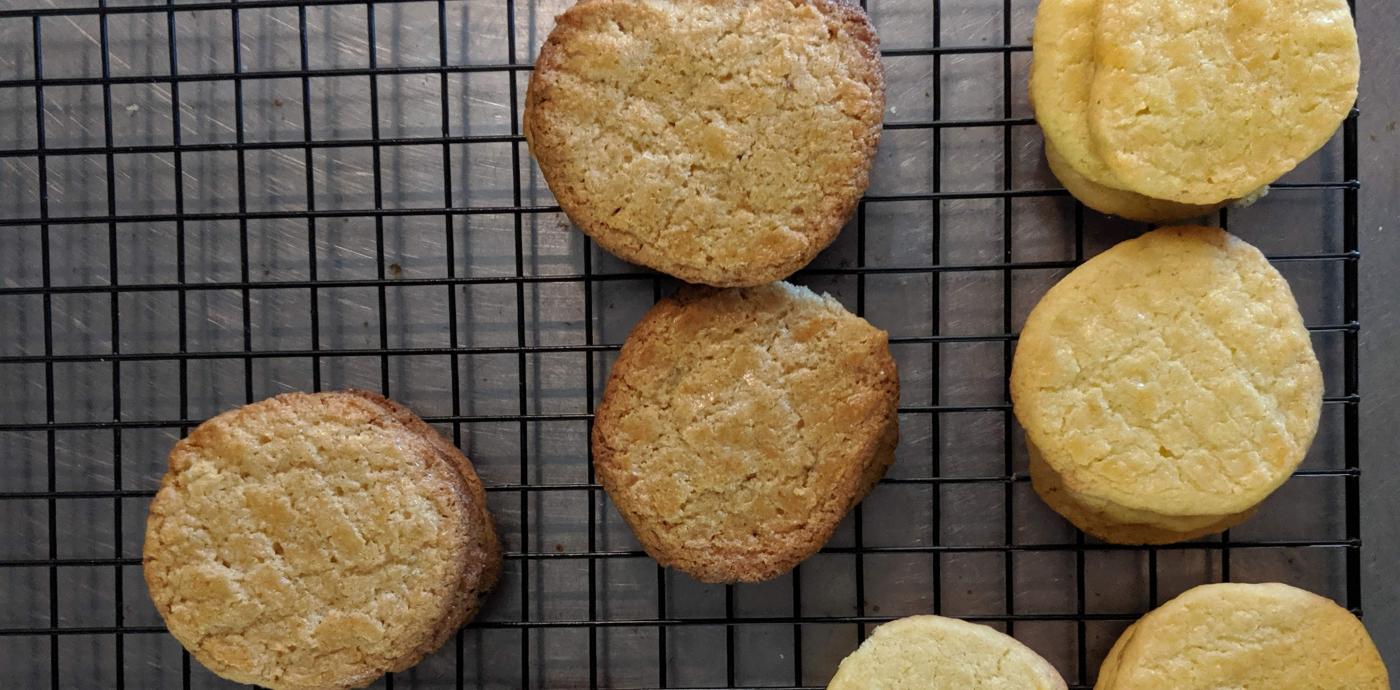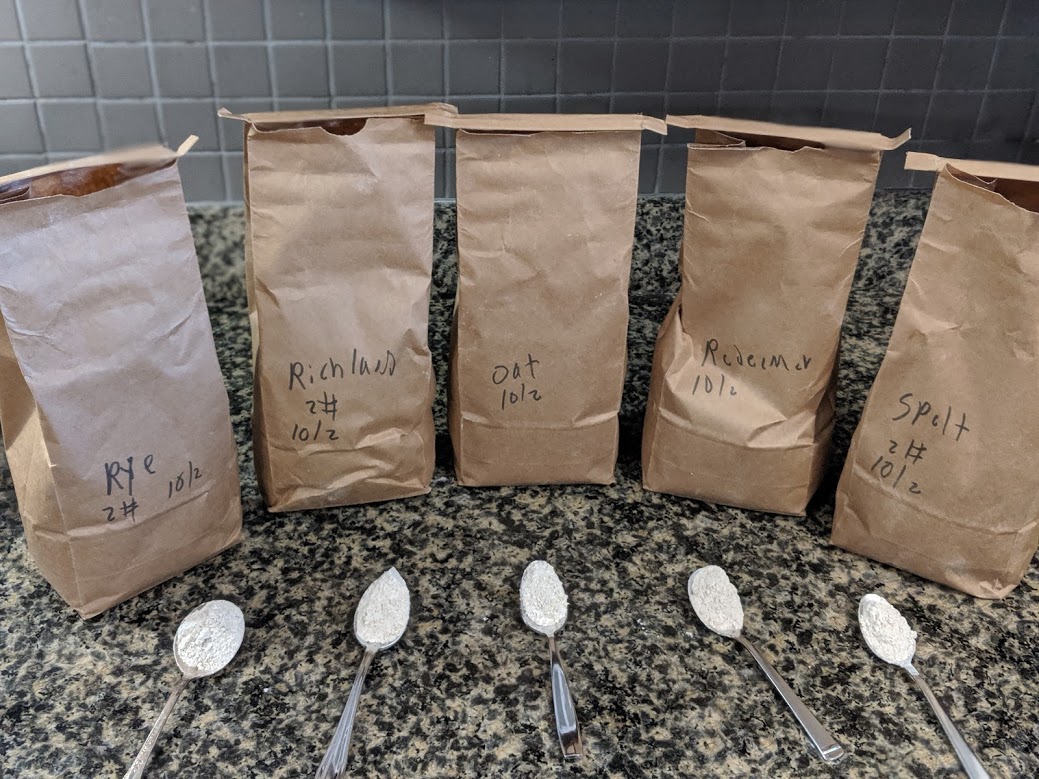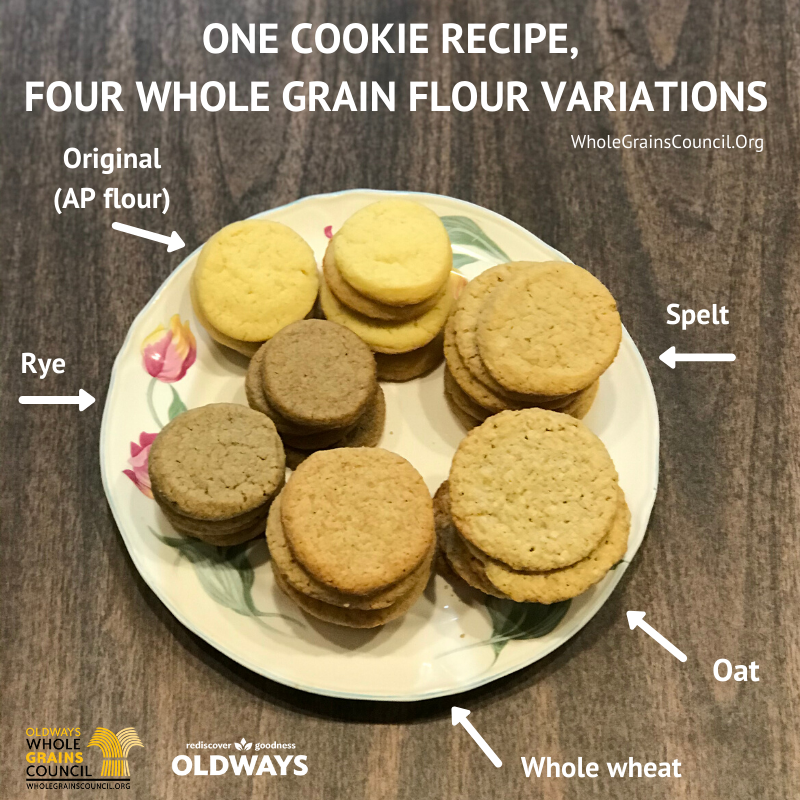Share This
Does baking with whole grain flours change your recipe results?
To find out, Oldways Whole Grain Stamp manager Abby tested one cookie recipe with five different types of flour—all-purpose, whole wheat, rye, oat, and spelt.
Abby started with David Lebovitz’s Breton Sables, also known as Salted French Butter Cookies (“What. A. Dream.” she said of this delicious recipe.) Keeping the process, measurements, and remaining ingredients the same, she swapped in the different flours and recorded the results. How did the whole grain flours change the texture and taste of the cookie? Which one did she like best? Read on to find out!
All-Purpose
The all-purpose, white flour cookies had a classic rich and buttery sable taste. The cookies kept their shape well as they baked.
Whole Wheat
The whole wheat cookies spread slightly more during the bake than the all-purpose cookies did. The flavor was a little fuller, too. Overall, however, “the all-purpose and the whole wheat flour cookies were relatively similar,” said Abby.
Rye
The rye cookies had zero spread in the oven! The cookie shape had the same integrity as the all-purpose cookies, with very little spread during baking. However, the flavor notes were much different— spicy and chocolatey. Abby could even smell the difference when mixing the dough! “A totally different beast,” she said, adding that the rye added a nice depth of flavor to these cookies.
Oat
The oat cookies spread out the most during baking. They didn’t keep their dough’s original shape at all. This cookie had a nice texture and chew, with flavorful notes of caramel. An Oldways staff member called this cookie “nice and toasty.”
Spelt
The spelt cookies acted in much the same way as the all-purpose cookies, though they did spread out slightly more than the all-purpose during the bake. The spelt flour also added a subtle, welcome nutty note to the flavor of the cookies. “This was my favorite,” said Abby. “If you want to substitute whole grain flour for white, I think spelt is the best substitute. It’s accessible, doesn’t change the result too much, and even improves the depth of flavor a little.”
Get ready to bake! Find David Lebovitz’s Breton Sable recipe here. Substitute in the whole grain flour of your choice for your cookies, and tag @Oldways_PT on Instagram to show us how they turned out!
If you’re inspired to cook with more whole grains, check out our 28-day whole grain menu guide, Whole Grains Around the World!




Comments
Add a Comment